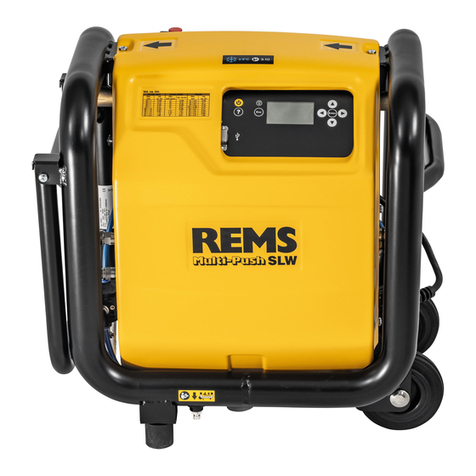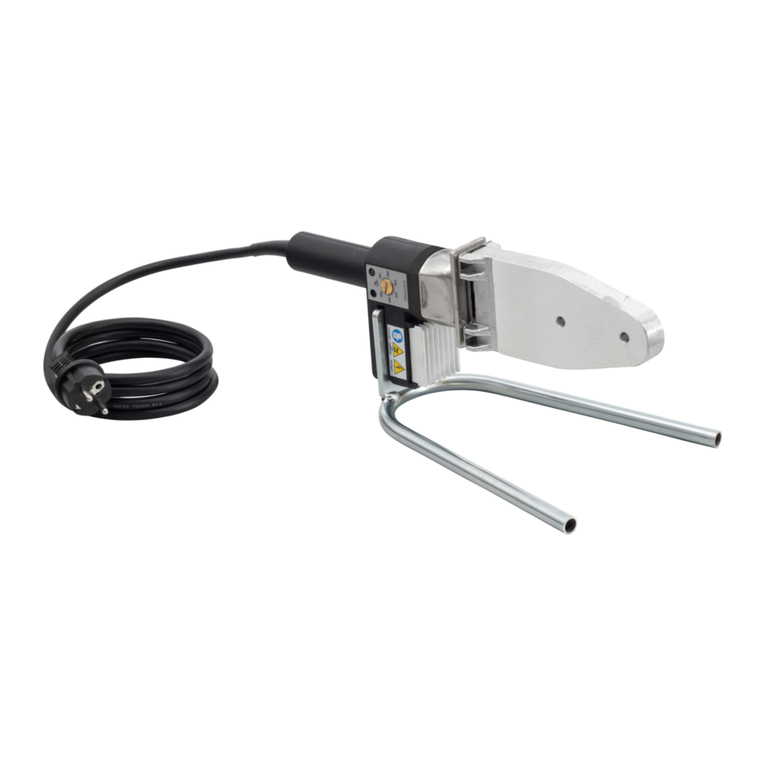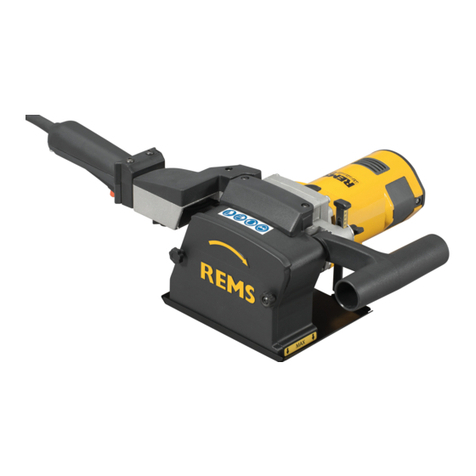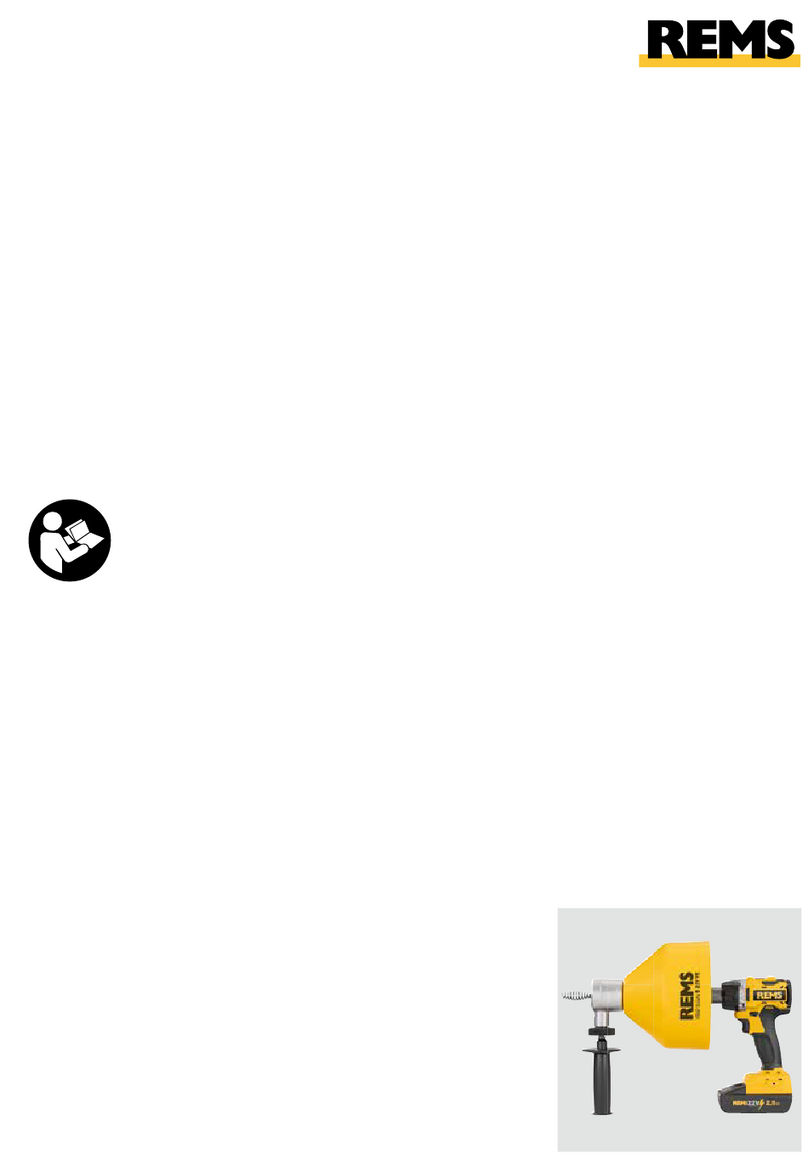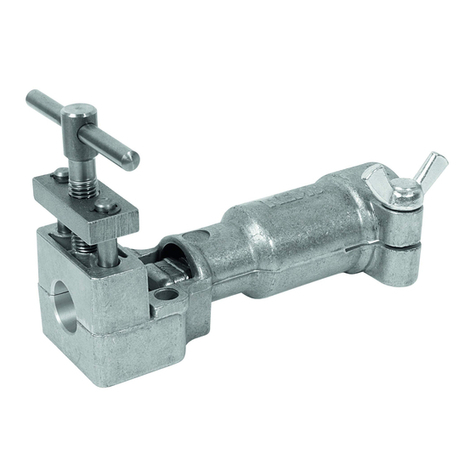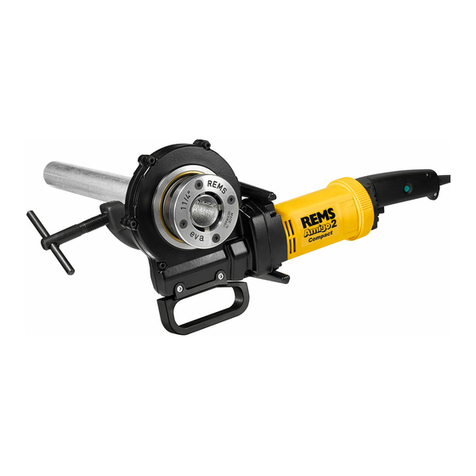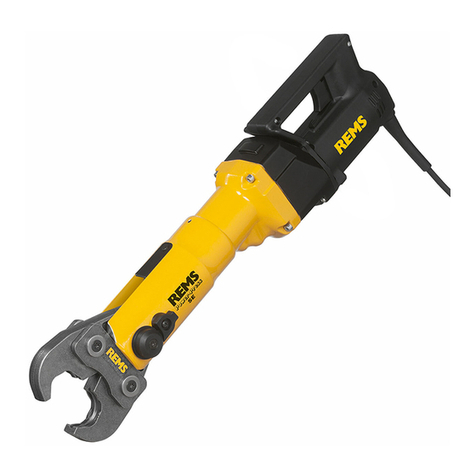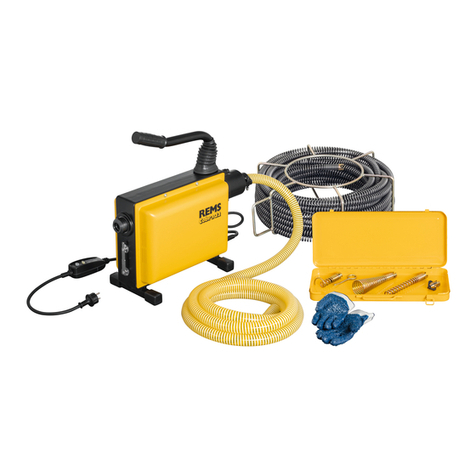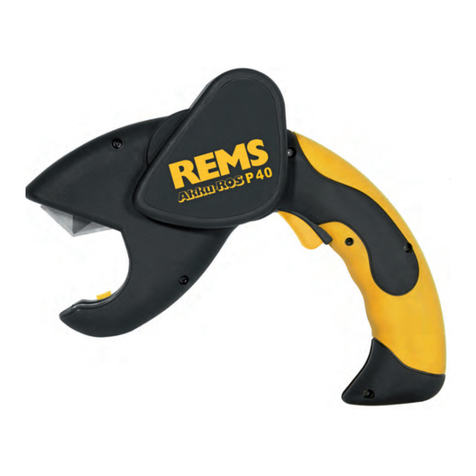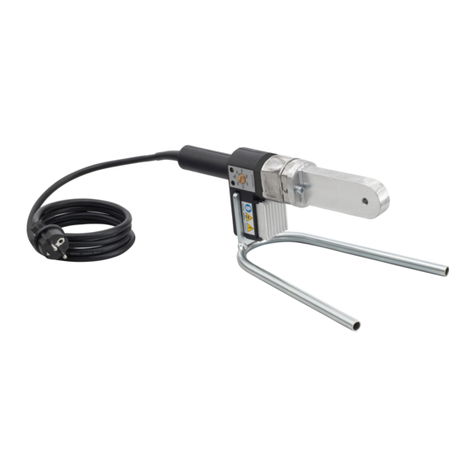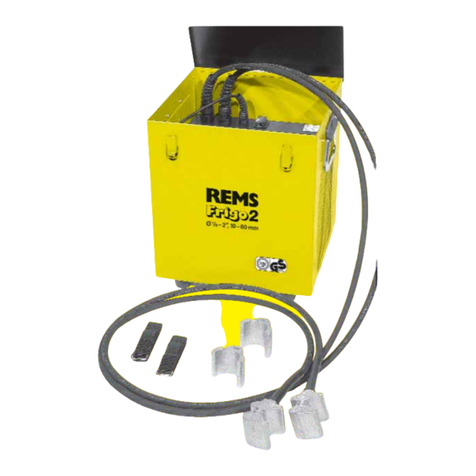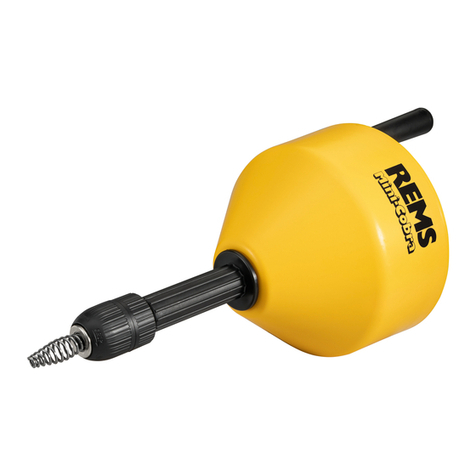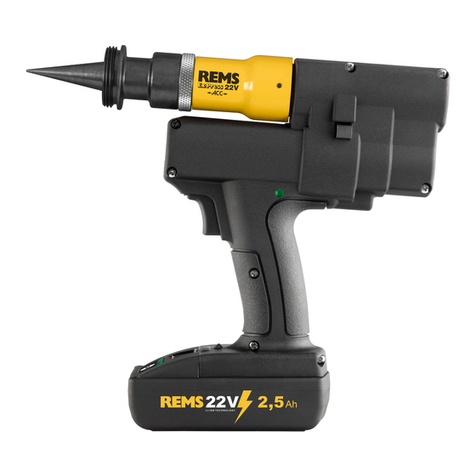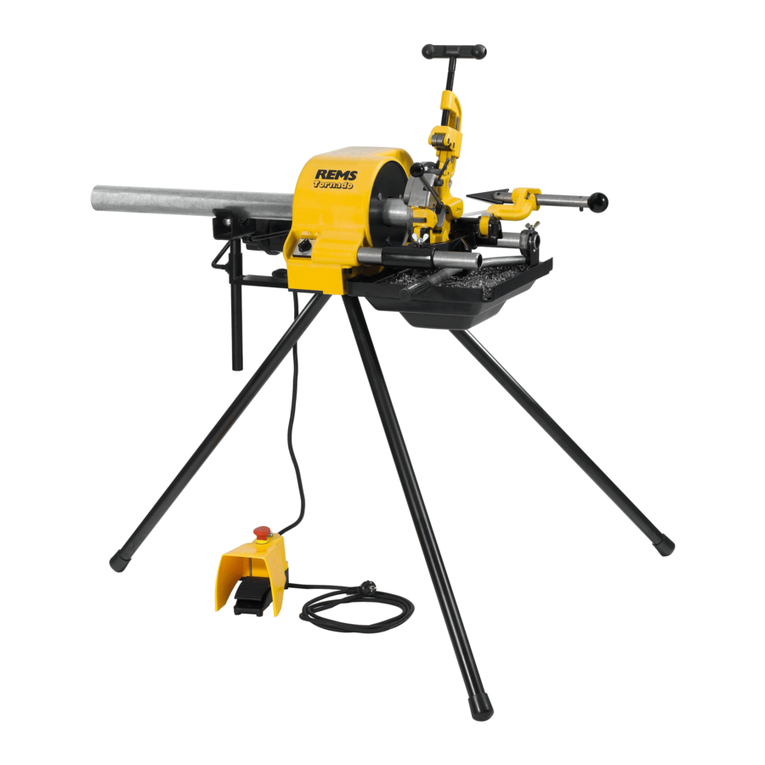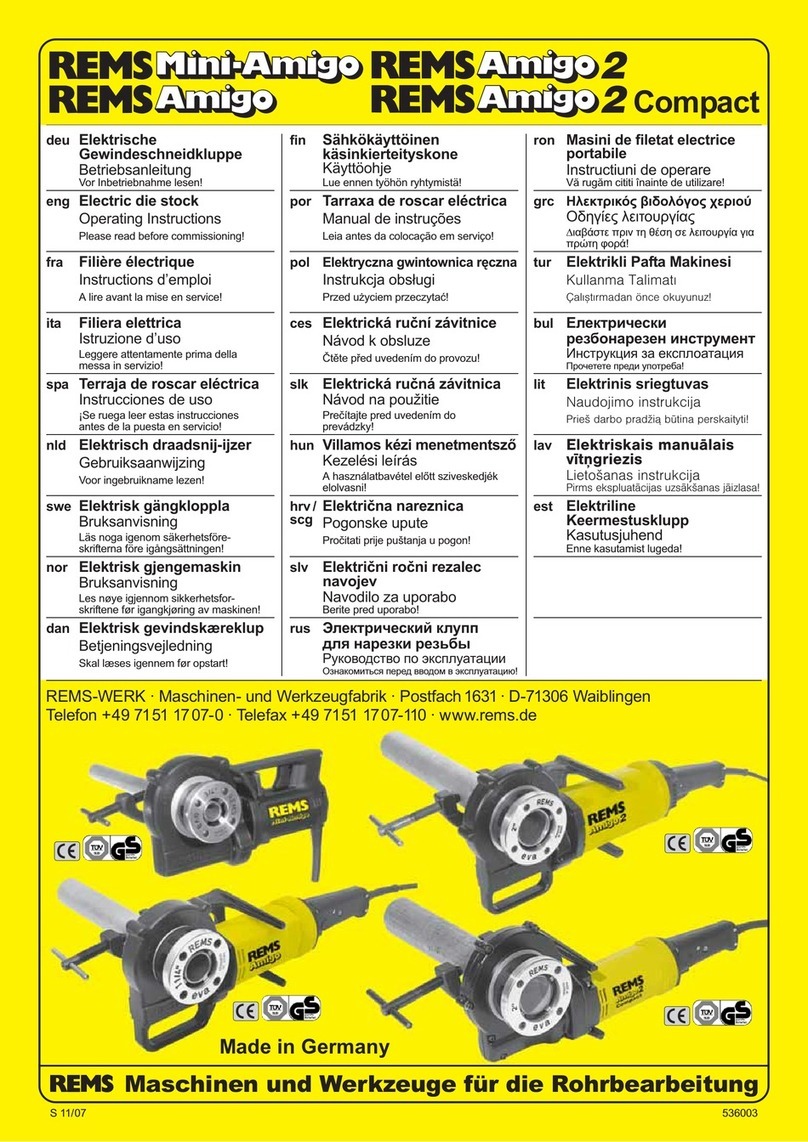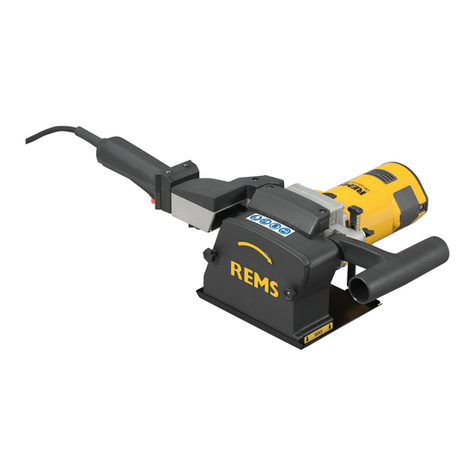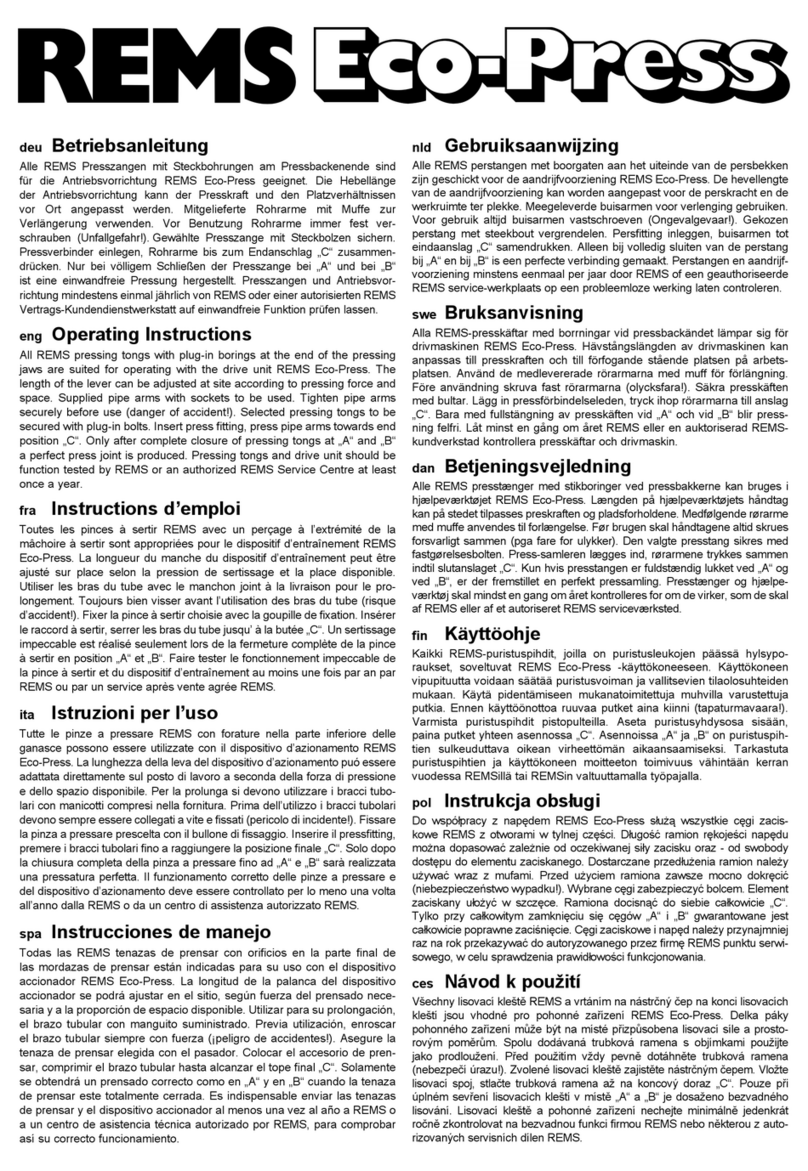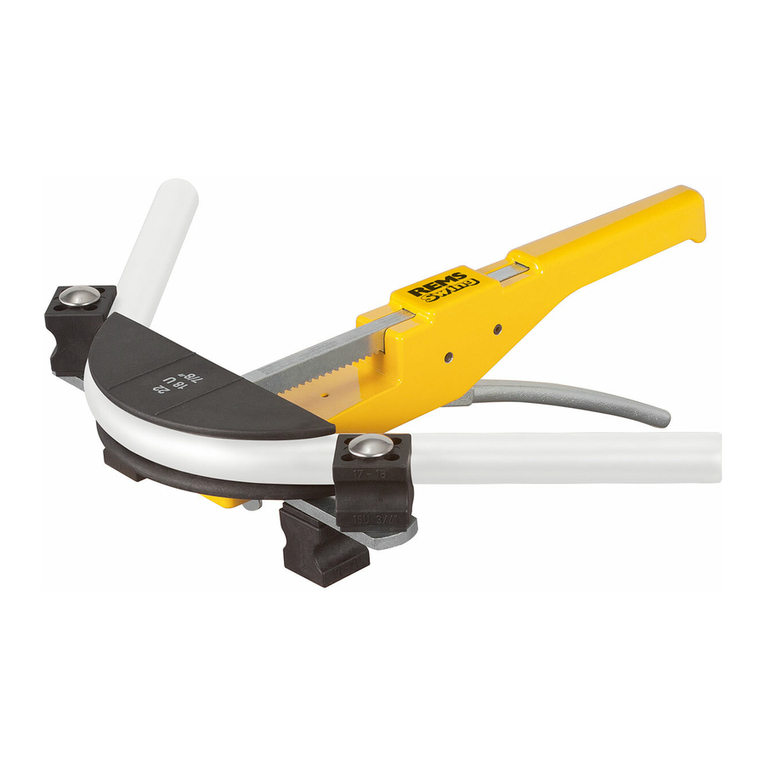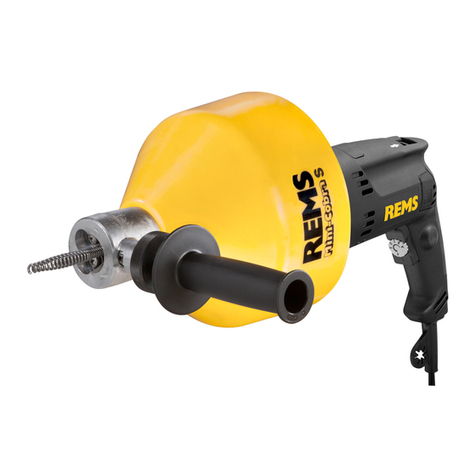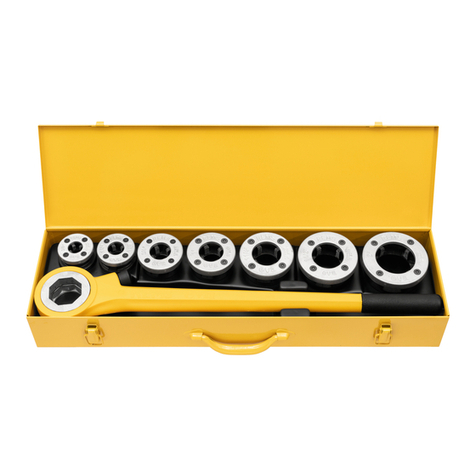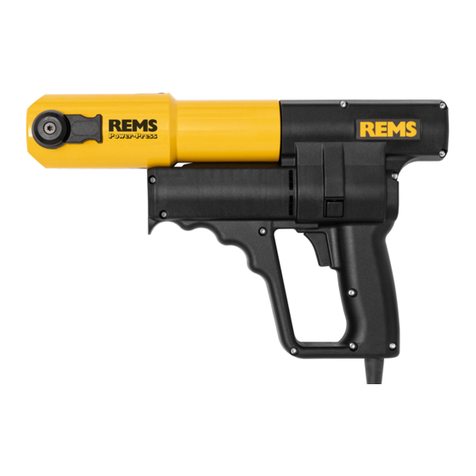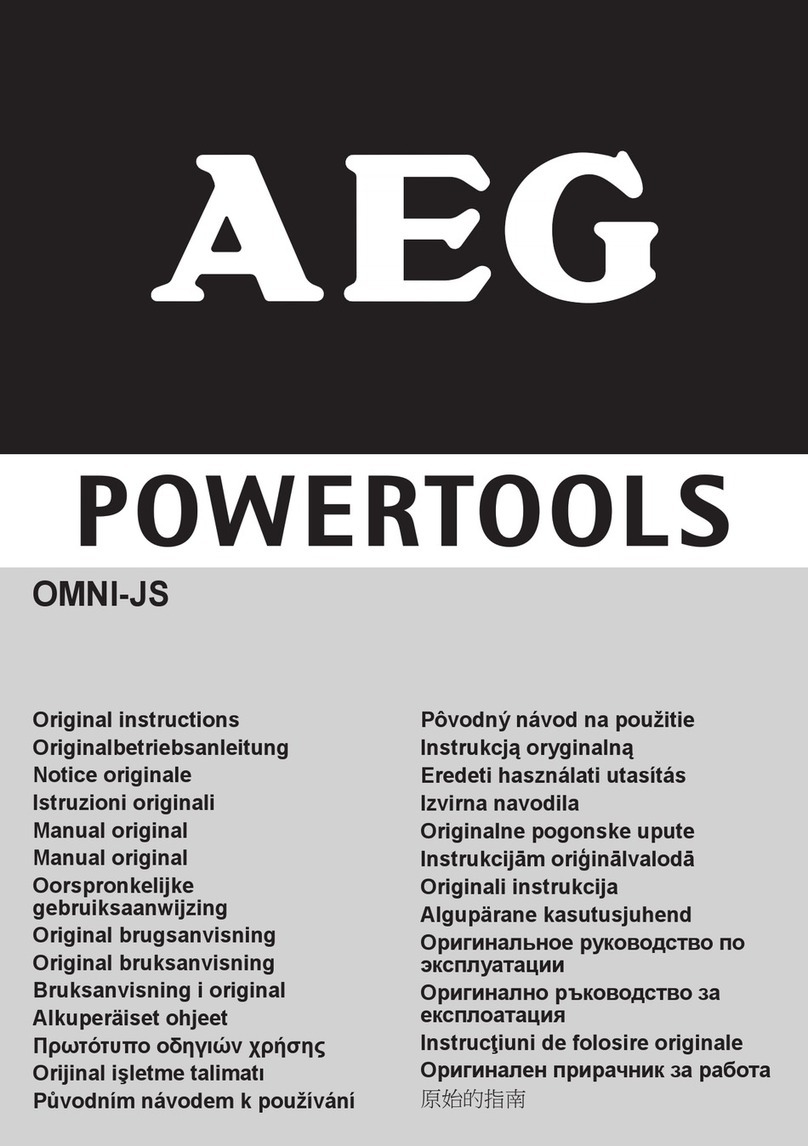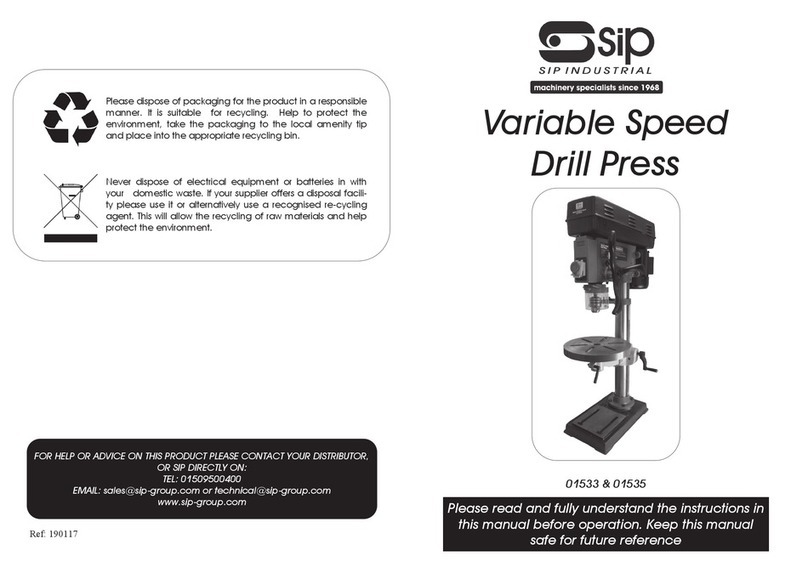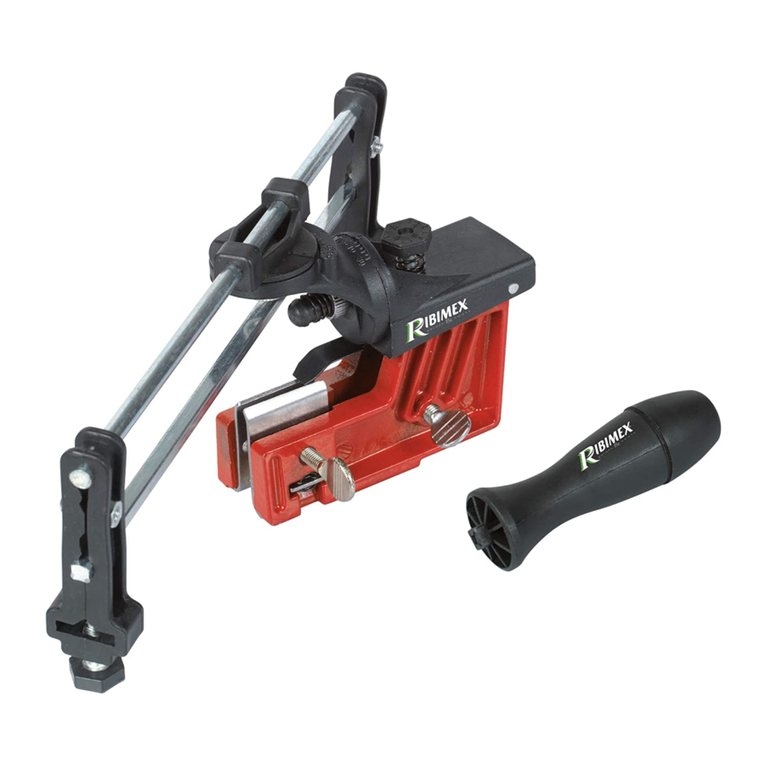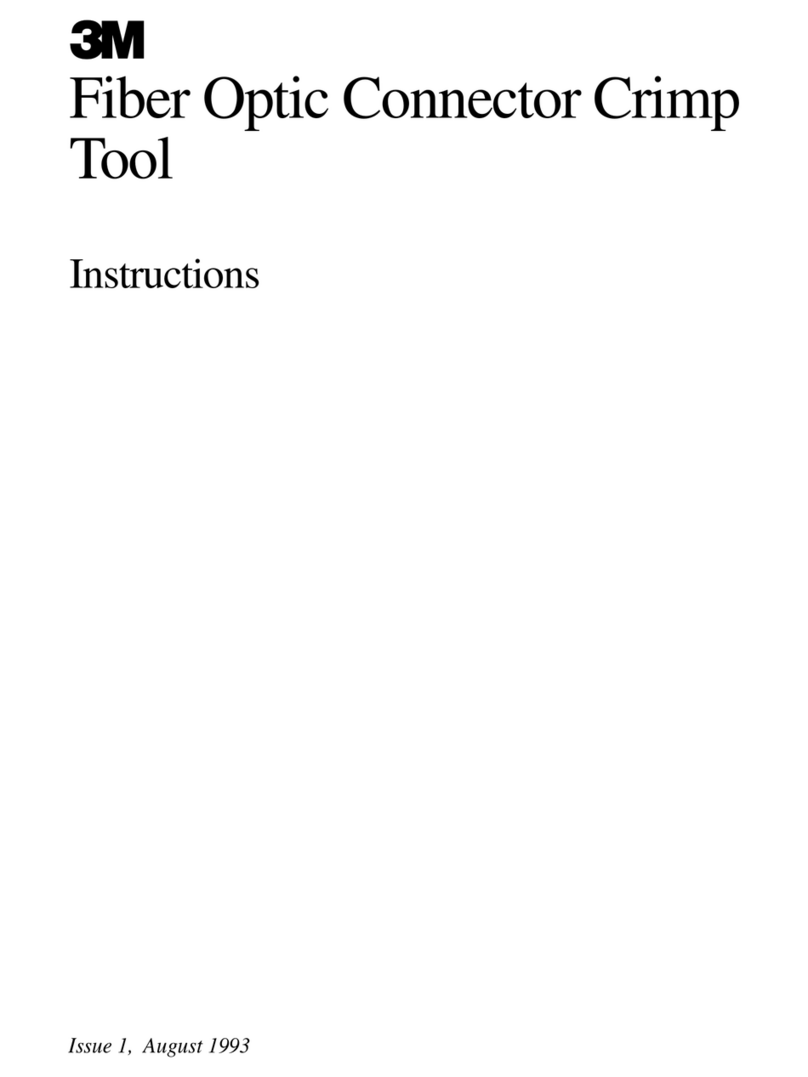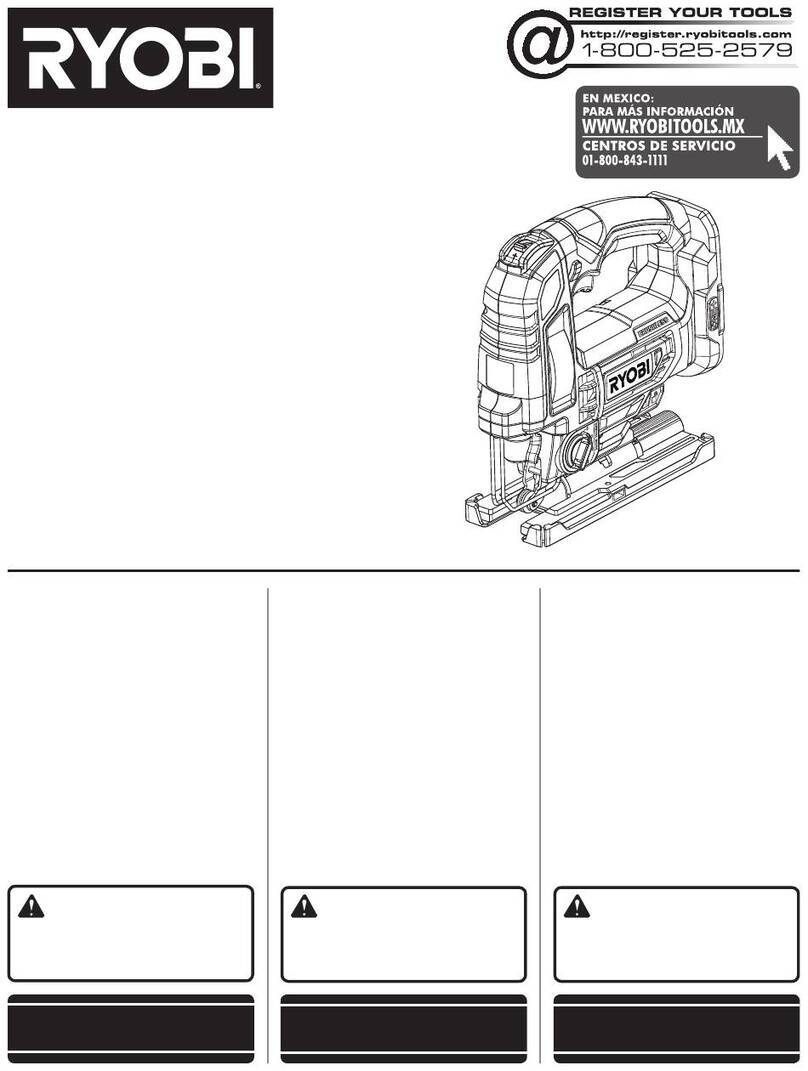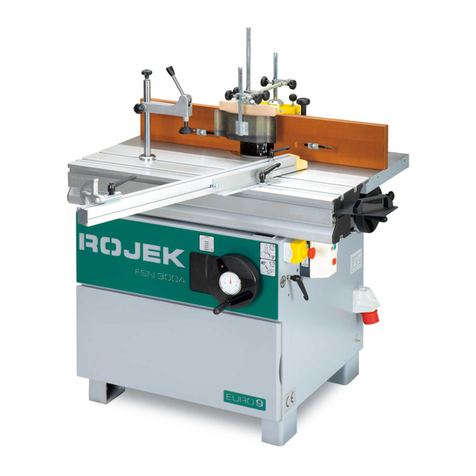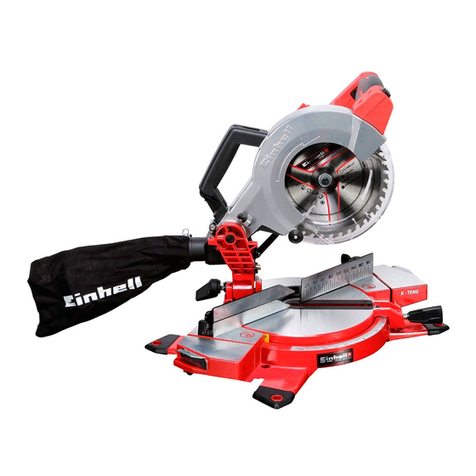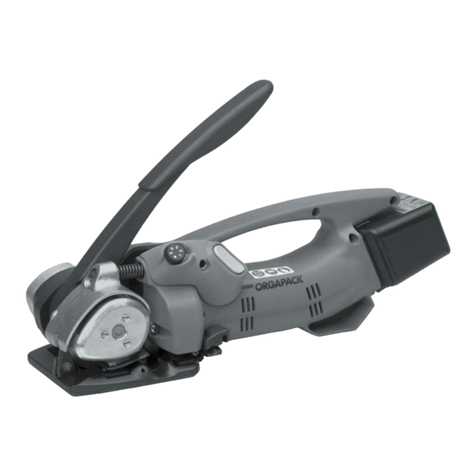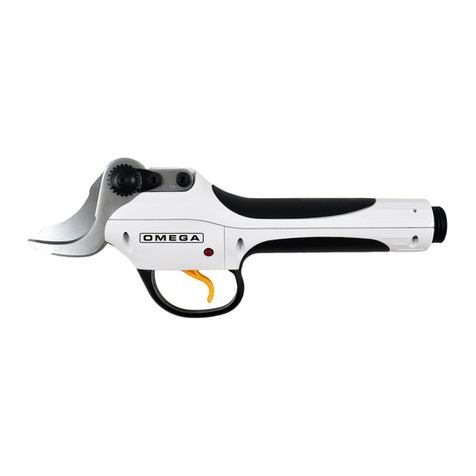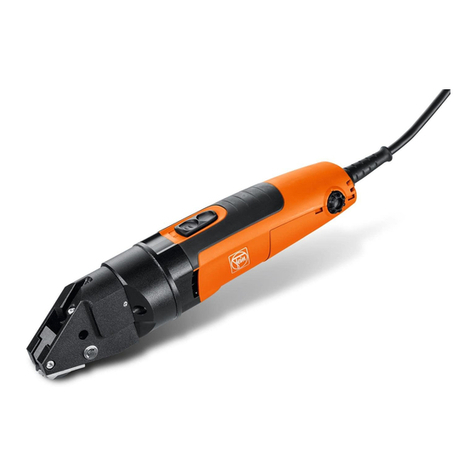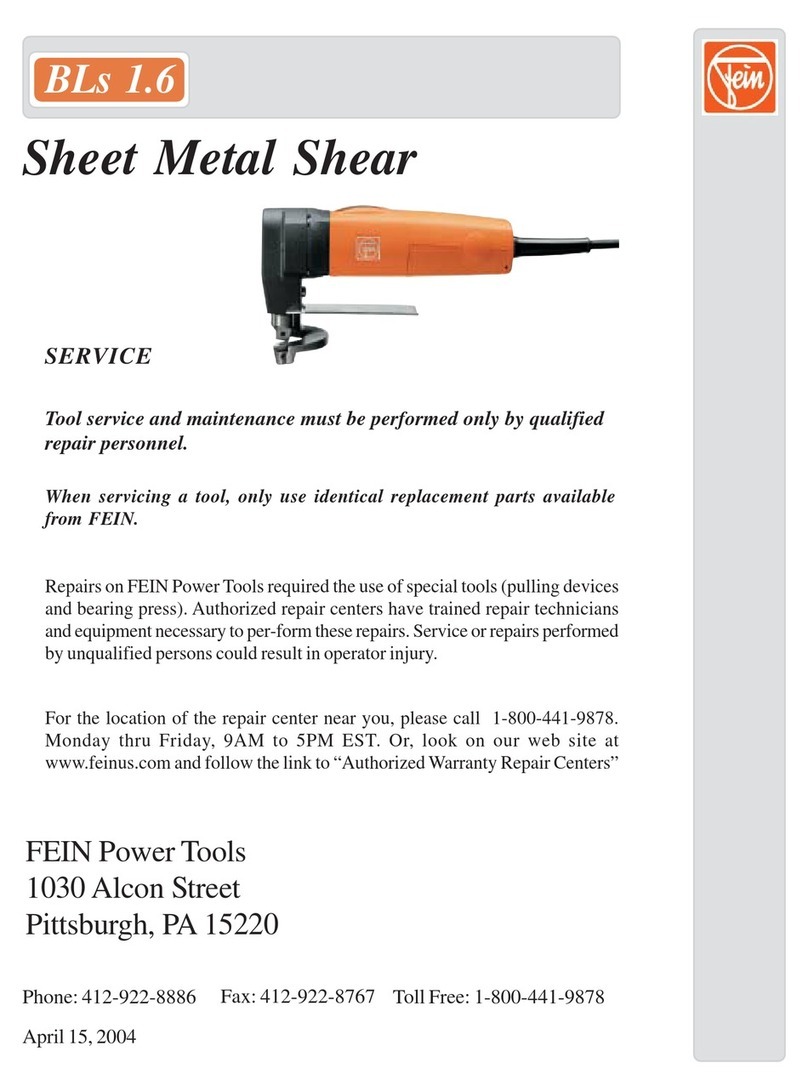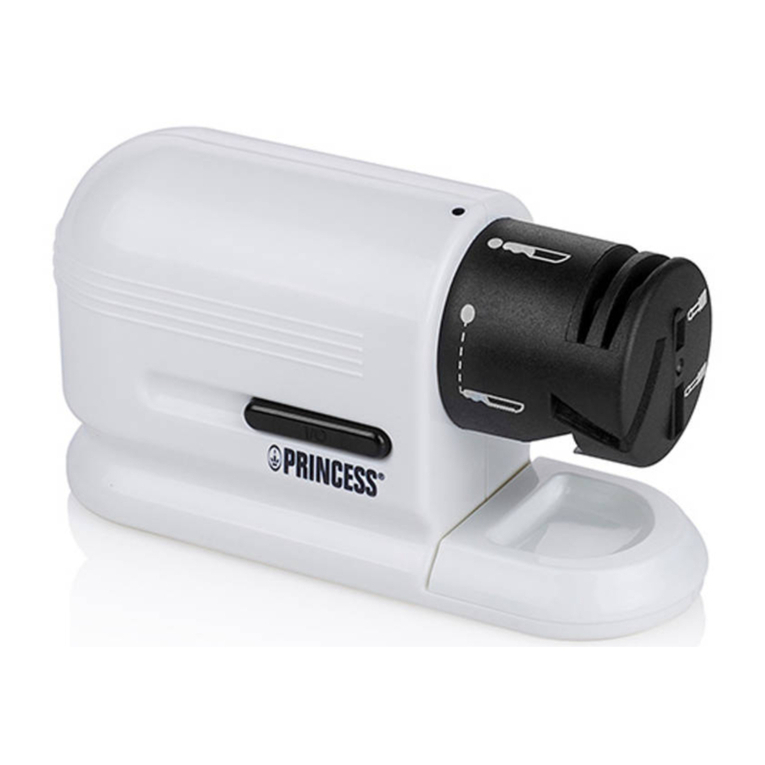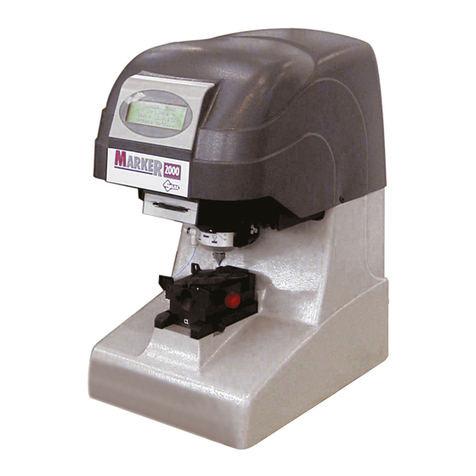
Originalbetriebsanleitung
Fig. 1–2
1 Biegesegment
2 Vierkant
3 Gleitstück
4 Steckbolzen
5 linke Aufnahmebohrung
6 rechte Aufnahmebohrung
7 Stellring / Schieber
8 Tippschalter
9 Motorgriff
10 Mitnehmer
11 Abstützung 35–50
12 Vierkant 35– 50
13 Abstützung 10–40
14 Vierkant 10– 40
15 Abstützung unten
16 Arretierbolzen
17 Akku
18 Schnellladegerät
$OOJHPHLQH6LFKHUKHLWVKLQZHLVH
WARNUNG
Lesen Sie alle Sicherheitshinweise und Anweisungen. Versäumnisse bei der
Einhaltung der Sicherheitshinweise und Anweisungen können elektrischen Schlag,
Brand und/oder schwere Verletzungen verursachen.
Bewahren Sie alle Sicherheitshinweise und Anweisungen für die Zukunft auf.
Der in den Sicherheitshinweisen verwendete Begriff „Elektrowerkzeug“ bezieht sich
auf netzbetriebene Elektrowerkzeuge (mit Netzkabel) und auf akkubetriebene
Elektrowerkzeuge (ohne Netzkabel).
1) Arbeitsplatzsicherheit
a) Halten Sie Ihren Arbeitsbereich sauber und gut beleuchtet. Unordnung und
unbeleuchtete Arbeitsbereiche können zu Unfällen führen.
E $UEHLWHQ6LHPLWGHP(OHNWURZHUN]HXJQLFKWLQH[SORVLRQVJHIlKUGHWHU
8PJHEXQJLQGHUVLFKEUHQQEDUH)OVVLJNHLWHQ*DVHRGHU6WlXEHEH¿QGHQ
Elektrowerkzeuge erzeugen Funken, die den Staub oder die Dämpfe entzünden
können.
c) Halten Sie Kinder und andere Personen während der Benutzung des Elek-
trowerkzeugs fern. Bei Ablenkung können Sie die Kontrolle über das Gerät
verlieren.
2) Elektrische Sicherheit
D 'HU$QVFKOXVVVWHFNHUGHV(OHNWURZHUN]HXJVPXVVLQGLH6WHFNGRVHSDVVHQ
Der Stecker darf in keiner Weise verändert werden. Verwenden Sie keine
Adapterstecker gemeinsam mit schutzgeerdeten Elektrowerkzeugen. Unverän-
derte Stecker und passende Steckdosen verringern das Risiko eines elektrischen
Schlages.
E 9HUPHLGHQ6LH.|USHUNRQWDNWPLWJHHUGHWHQ2EHUÀlFKHQZLHYRQ5RKUHQ
+HL]XQJHQ+HUGHQXQG.KOVFKUlQNHQ Es besteht ein erhöhtes Risiko durch
elektrischen Schlag, wenn Ihr Körper geerdet ist.
c) Halten Sie Elektrowerkzeuge von Regen oder Nässe fern. Das Eindringen
von Wasser in ein Elektrowerkzeug erhöht das Risiko eines elektrischen Schlages.
G =ZHFNHQWIUHPGHQ6LHGDV.DEHOQLFKWXPGDV(OHNWURZHUN]HXJ]XWUDJHQ
DXI]XKlQJHQRGHUXPGHQ6WHFNHUDXVGHU6WHFNGRVH]X]LHKHQ+DOWHQ6LH
GDV.DEHOIHUQYRQ+LW]HgOVFKDUIHQ.DQWHQRGHUVLFKEHZHJHQGHQ
Geräteteilen. Beschädigte oder verwickelte Kabel erhöhen das Risiko eines
elektrischen Schlages.
H :HQQ6LHPLWHLQHP(OHNWURZHUN]HXJLP)UHLHQDUEHLWHQYHUZHQGHQ6LH
QXU9HUOlQJHUXQJVNDEHOGLHDXFKIUGHQ$XHQEHUHLFKJHHLJQHWVLQG Die
Anwendung eines für den Außenbereich geeigneten Verlängerungskabels
verringert das Risiko eines elektrischen Schlages.
I :HQQGHU%HWULHEGHV(OHNWURZHUN]HXJVLQIHXFKWHU8PJHEXQJQLFKW
YHUPHLGEDULVWYHUZHQGHQ6LHHLQHQ)HKOHUVWURPVFKXW]VFKDOWHU Der Einsatz
eines Fehlerstromschutzschalters vermindert das Risiko eines elektrischen
Schlages.
3) Sicherheit von Personen
D 6HLHQ6LHDXIPHUNVDPDFKWHQ6LHGDUDXIZDV6LHWXQXQGJHKHQ6LHPLW
9HUQXQIWDQGLH$UEHLWPLWHLQHP(OHNWURZHUN]HXJ%HQXW]HQ6LHNHLQ(OHN-
WURZHUN]HXJZHQQ6LHPGHVLQGRGHUXQWHUGHP(LQÀXVVYRQ'URJHQ
$ONRKRORGHU0HGLNDPHQWHQVWHKHQ Ein Moment der Unachtsamkeit beim
Gebrauch des Elektrowerkzeugs kann zu ernsthaften Verletzungen führen.
E 7UDJHQ6LHSHUV|QOLFKH6FKXW]DXVUVWXQJXQGLPPHUHLQH6FKXW]EULOOH
Das Tragen persönlicher Schutzausrüstung, wie Staubmaske, rutschfeste Sicher-
heitsschuhe, Schutzhelm, oder Gehörschutz, je nach Art und Einsatz des Elek-
trowerkzeugs, verringert das Risiko von Verletzungen.
F 9HUPHLGHQ6LHHLQHXQEHDEVLFKWLJWH,QEHWULHEQDKPH9HUJHZLVVHUQ6LH
VLFKGDVVGDV(OHNWURZHUN]HXJDXVJHVFKDOWHWLVWEHYRU6LHHVDQGLH
6WURPYHUVRUJXQJXQGRGHUGHQ$NNXDQVFKOLHHQHVDXIQHKPHQRGHU
tragen. Wenn Sie beim Tragen des elektrischen Gerätes den Finger am Schalter
haben oder das Gerät eingeschaltet an die Stromversorgung anschließen, kann
dies zu Unfällen führen.
G (QWIHUQHQ6LH(LQVWHOOZHUN]HXJHRGHU6FKUDXEHQVFKOVVHOEHYRU6LHGDV
Elektrowerkzeug einschalten. Ein Werkzeug oder Schlüssel, der sich in einem
drehenden Geräteteil be¿ndet, kann zu Verletzungen führen.
H 9HUPHLGHQ6LHHLQHDEQRUPDOH.|USHUKDOWXQJ6RUJHQ6LHIUHLQHQVLFKHUHQ
Stand und halten Sie jederzeit das Gleichgewicht. Dadurch können Sie das
Elektrowerkzeug in unerwarteten Situationen besser kontrollieren.
f) Tragen Sie geeignete Kleidung. Tragen Sie keine weite Kleidung oder
6FKPXFN+DOWHQ6LH+DDUH.OHLGXQJXQG+DQGVFKXKHIHUQYRQVLFK
bewegenden Teilen. Lockere Kleidung, Schmuck oder lange Haare können von
sich bewegenden Teilen erfasst werden.
J :HQQ6WDXEDEVDXJXQGDXIIDQJHLQULFKWXQJHQPRQWLHUWZHUGHQN|QQHQ
YHUJHZLVVHUQ6LHVLFKGDVVGLHVHDQJHVFKORVVHQVLQGXQGULFKWLJYHUZHQGHW
werden. Verwendung einer Staubabsaugung kann Gefährdungen durch Staub
verringern.
4) Verwendung und Behandlung des Elektrowerkzeugs
a) Überlasten Sie das Gerät nicht. Verwenden Sie für Ihre Arbeit das dafür
EHVWLPPWH(OHNWURZHUN]HXJ Mit dem passenden Elektrowerkzeug arbeiten
Sie besser und sicherer im angegebenen Leistungsbereich.
E %HQXW]HQ6LHNHLQ(OHNWURZHUN]HXJGHVVHQ6FKDOWHUGHIHNWLVW Ein Elek-
trowerkzeug, das sich nicht mehr ein- oder ausschalten lässt, ist gefährlich und
muss repariert werden.
F =LHKHQ6LHGHQ6WHFNHUDXVGHU6WHFNGRVHXQGRGHUHQWIHUQHQ6LHGHQ$NNX
EHYRU6LH*HUlWHHLQVWHOOXQJHQYRUQHKPHQ=XEHK|UWHLOHZHFKVHOQRGHU
das Gerät weglegen. Diese Vorsichtsmaßnahme verhindert den unbeabsichtigten
Start des Elektrowerkzeugs.
G %HZDKUHQ6LHXQEHQXW]WH(OHNWURZHUN]HXJHDXHUKDOEGHU5HLFKZHLWHYRQ
.LQGHUQDXI/DVVHQ6LH3HUVRQHQGDV*HUlWQLFKWEHQXW]HQGLHPLWGLHVHP
nicht vertraut sind oder diese Anweisungen nicht gelesen haben. Elektro-
werkzeuge sind gefährlich, wenn sie von unerfahrenen Personen benutzt werden.
H 3ÀHJHQ6LHGDV(OHNWURZHUN]HXJPLW6RUJIDOW.RQWUROOLHUHQ6LHREEHZHJ-
OLFKH*HUlWHWHLOHHLQZDQGIUHLIXQNWLRQLHUHQXQGQLFKWNOHPPHQRE7HLOH
JHEURFKHQRGHUVREHVFKlGLJWVLQGGDVVGLH)XQNWLRQGHV(OHNWURZHUN]HXJV
EHHLQWUlFKWLJWLVW/DVVHQ6LHEHVFKlGLJWH7HLOHYRUGHP(LQVDW]GHV*HUlWHV
reparieren. Viele Unfälle haben ihre Ursache in schlecht gewarteten Elektro-
werkzeugen.
f) Halten Sie Schneidwerkzeuge scharf und sauber. Sorgfältig gepÀegte Schneid-
werkzeuge mit scharfen Schneidkanten verklemmen sich weniger und sind leichter
zu führen.
J 9HUZHQGHQ6LH(OHNWURZHUN]HXJ=XEHK|U(LQVDW]ZHUN]HXJHXVZHQWVSUH-
chend diesen Anweisungen. Berücksichtigen Sie dabei die Arbeitsbedin-
gungen und die auszuführende Tätigkeit. Der Gebrauch von Elektrowerkzeugen
für andere als die vorgesehenen Anwendungen kann zu gefährlichen Situationen
führen.
5) Verwendung und Behandlung des Akkuwerkzeugs
D /DGHQ6LHGLH$NNXVQXULQ/DGHJHUlWHQDXIGLHYRP+HUVWHOOHUHPSIRKOHQ
werden. Für ein Ladegerät, das für eine bestimmte Art von Akkus geeignet ist,
besteht Brandgefahr, wenn es mit anderen Akkus verwendet wird.
b) Verwenden Sie nur die dafür vorgesehenen Akkus in den Elektrowerkzeugen.
Der Gebrauch von anderen Akkus kann zu Verletzungen und Brandgefahr führen.
F +DOWHQ6LHGHQQLFKWEHQXW]WHQ$NNXIHUQYRQ%URNODPPHUQ0Q]HQ
6FKOVVHOQ1lJHOQ6FKUDXEHQRGHUDQGHUHQNOHLQHQ0HWDOOJHJHQVWlQGHQ
die eine Überbrückung der Kontakte verursachen könnten. Ein Kurzschluss
zwischen den Akkukontakten kann Verbrennungen oder Feuer zur Folge haben.
G %HLIDOVFKHU$QZHQGXQJNDQQ)OVVLJNHLWDXVGHP$NNXDXVWUHWHQ9HUPHLGHQ
6LHGHQ.RQWDNWGDPLW%HL]XIlOOLJHP.RQWDNWPLW:DVVHUDEVSOHQ:HQQ
GLH)OVVLJNHLWLQGLH$XJHQNRPPWQHKPHQ6LH]XVlW]OLFKlU]WOLFKH+LOIH
in Anspruch. Austretende AkkuÀüssigkeit kann zu Hautreizungen oder Verbren-
nungen führen.
6) Service
D /DVVHQ6LH,KU(OHNWURZHUN]HXJQXUYRQTXDOL¿]LHUWHP)DFKSHUVRQDOXQG
QXUPLW2ULJLQDO(UVDW]WHLOHQUHSDULHUHQ Damit wird sichergestellt, dass die
Sicherheit des Geräts erhalten bleibt.
Sicherheitshinweise für elektrische Rohrbieger
WARNUNG
Lesen Sie alle Sicherheitshinweise und Anweisungen. Versäumnisse bei der
Einhaltung der Sicherheitshinweise und Anweisungen können elektrischen Schlag,
Brand und/oder schwere Verletzungen verursachen.
Bewahren Sie alle Sicherheitshinweise und Anweisungen für die Zukunft auf.
Ɣ
Persönliche Schutzausrüstung benutzen (Schutzbrille).
Ɣ
Abnorme Körperhaltung vermeiden, nicht zu weit vorbeugen.
Ɣ
Beim Biegen nicht zwischen Rohr und Biegesegment fassen. Quetschgefahr !!
Ɣ
Halten sie Haare und Kleidung fern von sich bewegenden Teilen.
Ɣ
Nur Arbeiten durchführen, für welche die Maschine vorgesehen ist.
Ɣ
Während der Arbeiten dritte Personen vom Arbeitsbereich fernhalten.
Ɣ
Die Antriebsmaschinen entwickeln eine sehr hohe Biegekraft. Deshalb besonders
vorsichtig sein.
Ɣ
Die Akku’s Ni-Cd bzw. Li-Ion sind in der Antriebsmaschine nicht tauschbar.
Ɣ
Sollte der Austausch des Steckers oder Anschlussleitung erforderlich sein, so ist
dies nur vom Hersteller oder seines Kundendienstes auszuführen.
Sicherheitshinweise für Akkus
WARNUNG
Lesen Sie alle Sicherheitshinweise und Anweisungen. Versäumnisse bei der
Einhaltung der Sicherheitshinweise und Anweisungen können elektrischen Schlag,
Brand und/oder schwere Verletzungen verursachen.
Bewahren Sie alle Sicherheitshinweise und Anweisungen für die Zukunft auf.
Ɣ
Akkus dürfen nur bei Temperaturen des Akkus oder Umgebungstemperaturen
–10 °C – +60 °C (14 °F – +40 °F) verwendet werden.
Ɣ
Das Schnellladegerät darf nur bei Temperaturen des Schnellladegerätes oder
Umgebungstemperaturen 0 °C – +40 °C (32 °F – +104 °F) verwendet werden.
Ɣ
Aufgedruckte Sicherheitshinweise auf Akku und Ladegerät beachten.
